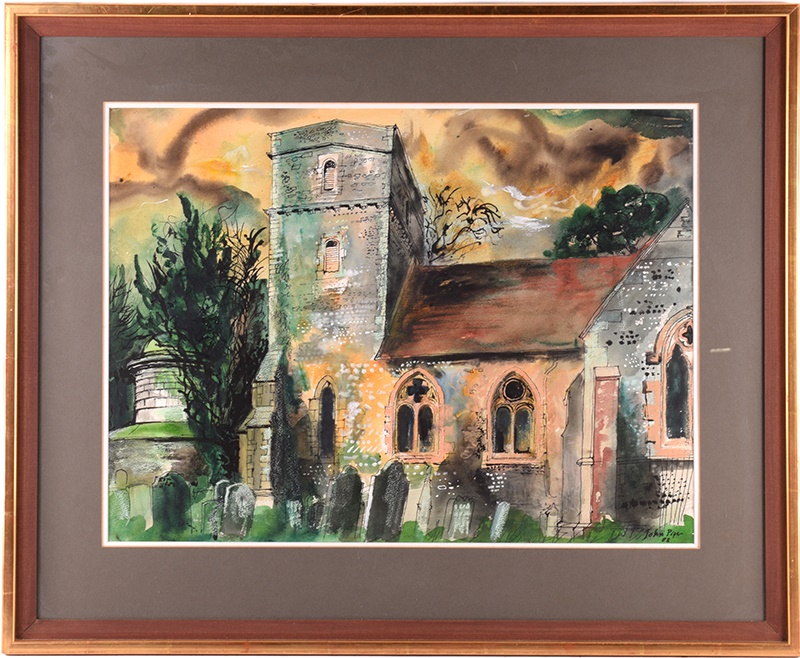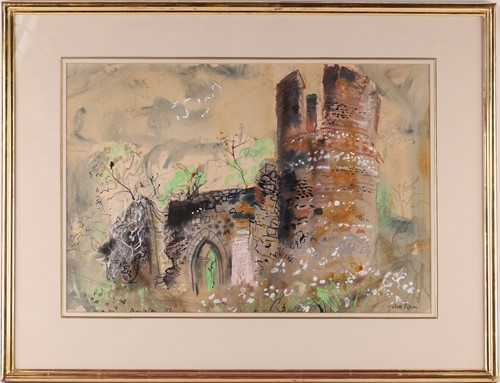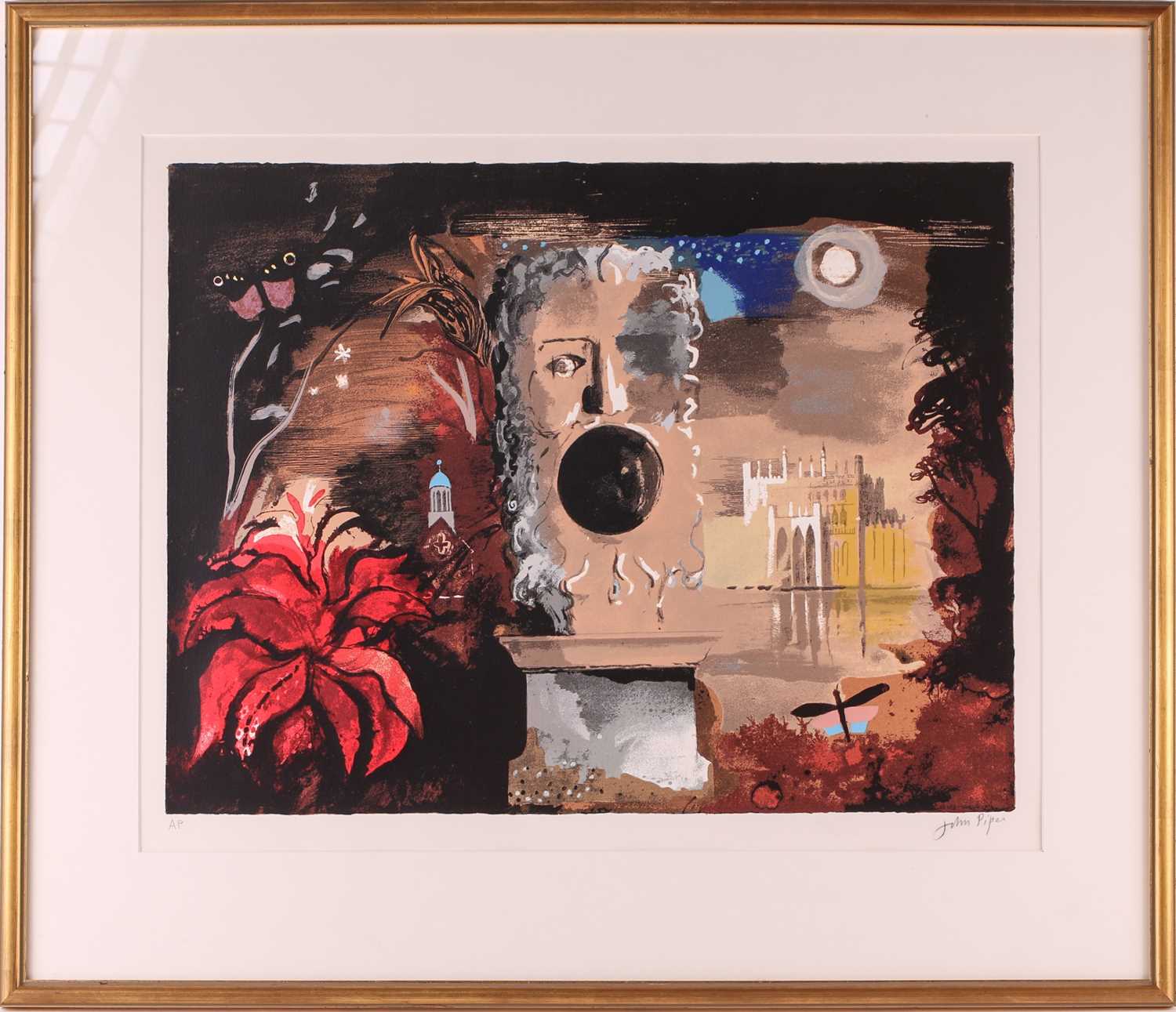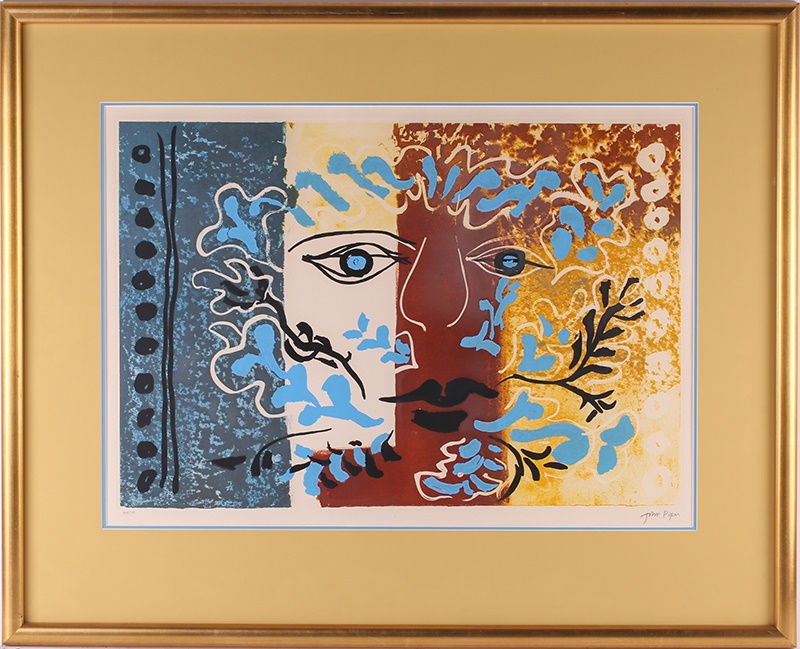A Guide to the Work of John Piper
His passion for British culture and heritage is evident throughout his long career
13/02/2024
John Piper was an incredibly versatile artist and a significant figure in the 20th century British art scene. While he is most well-known for his neo-romantic paintings and prints of British landscapes and architecture, his contributions extend well beyond, through to stained glass, writings, and theatre sets. His passion for British culture and heritage is evident throughout his long career.
John Egerton Christmas Piper was born on the 13th of December 1903 to parents Mary Ellen Matthews and solicitor Charles Alfred Piper. There is some speculation that he was appointed the name amid upcoming celebrations, but in fact, it was a family name which originated with his great grandmother, Lucy Christmas, and his great grandfather, William Piper. John was the youngest brother to Henry Edmund Gordon – solicitor, and Charles Arthur Matthews - who was sadly killed in the First World War.
John Piper (1903 - 1992), St Mary the Virgin Church
Piper grew up in Epsom, Surrey, he spent his youth exploring the countryside on his bicycle and drawing churches and memorials along the way. He created his own illustrated guide of the area – something he would return to later in life. He attended Epsom College, just as his brothers had, but he longed to pursue his artistic ventures. When he left in 1922, he published a book of poetry, his father unsurprisingly wanted him to become a solicitor and did not approve of his son’s ambitions. John would work at the family firm Piper, Smith & Piper in Westminster for three years, even taking his articles, but he declined the offer of partnership along with his inheritance, his father passed away in the same year, 1927.
He enrolled into Richmond School of Art where artist Raymond Coxon helped prepare Piper for his entrance exams to The Royal College of Art, during this time he met fellow artist Eileen Holding, who became his wife in 1929. Piper studied at the Royal College of Art in 1928, dropping out at the end of the following year due to his frustration with the regime.
John Piper CH (1903-1992) ‘Appleton’
In the 1930s he went on to exhibit alongside Eileen, as well as with “The London Group” – an organisation of artists in opposition to institutions like the Royal Academy. By the mid-30s he founded Axis, a Contemporary Art Journal, with Myfanwy Evans and joined the modernist group “Seven and Five Society” alongside Henry Moore, Ivon Hitchens, Ben Nicholson and Barbara Hepworth.
Piper’s wife left him for another artist, Ceri Richards. Following their divorce, Piper married Myfanwy in 1937, they would have two sons and two daughters together. She would be his muse for “Eye and Camera”, a series of mixed media works produced in the 60s and 70s which combined photography, collage, and drawing.
He visited Paris several times throughout this decade and befriended sculptor Alexander Calder, who invited him to attend the studios of Arp, Brancusi, and Jean Hélion. These avant-garde artists made an impression on Piper and significantly influenced his work at the time; however, it was short lived, and he returned to a more naturalistic style by the late 30s, just as World War II was breaking.
Piper volunteered to work for the RAF at the start of the war, interpreting aerial and reconnaissance photos, instead he was appointed an official war artist, responsible for recording the effects of the blitz on British buildings. He would travel to bomb sites swiftly in an effort to capture the devastation before clean-up commenced, he gained unprecedented access to official bunkers and control headquarters, the works he produced are arguably some of his most famous. A painting that he did of the bombed interior of Coventry Cathedral hit a nerve and was reproduced and sold as a postcard throughout the war, making him a British household name.
John Piper CH (1903-1992) ‘Façade’
Following the end of the war, John was appointed trustee at the Tate and National Galleries, as well as becoming a member of the Royal Fine Art Commission in 1959. A respected member of the Art community, he formed many friendships and collaborated on various projects. He shared creative concepts with fellow landscape artist Graham Sutherland, produced prints based on several of Henry Moore’s sculpture, designed sets on T.S Eliot’s play “The Family Reunion”, several projects with poet John Betjeman including The Shell Guides – travel guides to the British counties commissioned by the oil company – as well as numerous stage designs with Benjamin Britten including A Midsummer Night’s Dream, and projects with Paul Nash.
His work with Patrick Reyntiens on stained glass windows depicting scenes from the book of Revelation for the rebuilt Coventry Cathedral, as well as abstract stained glass window designs for the Liverpool Metropolitan Cathedral, are a celebration of bold and vivid colours. Piper was also a revered art critic, contributing to The Spectator, The Listener and the BBC’s Listener’s Guide to Music, he commentated on radio and TV programs to discuss art and culture.
John Piper CH (1903-1992), ‘Foliate Head, No.69’
He achieved considerable acclaim for his contributions to British Art, awarded with Commander of the Order of the British Empire in 1950, elected to the Royal Academy of Arts and knighthood in 1972, and the Companion of Honour in 1984. The Tate held a retrospective for John Piper in 1983, as did the Museum of Modern Art History in 1992, regular exhibitions of his work ensure the continuity of his legacy for generations to come.
In 1987 an operation left Piper visibly damaged, he also developed Alzheimer’s. He passed away at his home in Fawley Bottom, Buckinghamshire on the 28th of June 1992.
He was a painter, an artist, a theatre set and costume designer, an author, an illustrator, a stained-glass designer, a tapestry designer, a printmaker, a photographer, and a fabric designer, amongst many other talents.
read more
How Much is Modern British Art Worth?
How Can You Tell if a Painting is Rare?
Are you considering selling any artworks by John Piper?
With a global audience of millions, Dawsons can achieve the best prices for you.
Get in touch with an expert valuer today for sales advice. We would be delighted to help.



